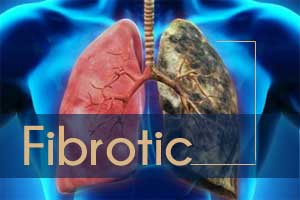- Home
- Editorial
- News
- Practice Guidelines
- Anesthesiology Guidelines
- Cancer Guidelines
- Cardiac Sciences Guidelines
- Critical Care Guidelines
- Dentistry Guidelines
- Dermatology Guidelines
- Diabetes and Endo Guidelines
- Diagnostics Guidelines
- ENT Guidelines
- Featured Practice Guidelines
- Gastroenterology Guidelines
- Geriatrics Guidelines
- Medicine Guidelines
- Nephrology Guidelines
- Neurosciences Guidelines
- Obs and Gynae Guidelines
- Ophthalmology Guidelines
- Orthopaedics Guidelines
- Paediatrics Guidelines
- Psychiatry Guidelines
- Pulmonology Guidelines
- Radiology Guidelines
- Surgery Guidelines
- Urology Guidelines
Major breakthrough to treat fibrotic diseases that cause organ failure

Researchers from Duke-NUS Medical School (Duke-NUS) and the National Heart Centre Singapore (NHCS) have discovered that a critical protein, known as interleukin 11 (IL11) is responsible for fibrosis and causes organ damage. While it is surprising that the importance of IL11 has been overlooked and misunderstood for so long, it has now been very clearly demonstrated by this work.
A protein known as transforming growth factor beta 12 ("TGFB1") has long been known as the major cause of fibrosis and scarring of body organs, but treatments based on switching off the protein have severe side effects. The scientists discovered that IL11, is even more important than TGFB1 for fibrosis and that IL11 is a much better drug target than TGFB1.
Fibrosis is the formation of excessive connective tissue, causing scarring and failure of bodily organs and the skin. It is a very common cause of cardiovascular and renal disease, where excessive connective tissue destroys the structure and function of the organ with scar tissue. Compared to other Asians, American, and Europeans, Singaporeans have a higher prevalence of coronary artery disease, hypertension, and diabetes, the three most common diseases that lead to heart failure. In addition, kidney failure is an epidemic in Singapore and around the world. Fibrosis of the heart and kidney eventually leads to heart and kidney failure, thus this breakthrough discovery -- that inhibiting IL11 can prevent heart and kidney fibrosis -- has the potential to transform the treatment of millions of people around the world.
The international team, led by Professor Stuart Cook, Tanoto Foundation Professor of Cardiovascular Medicine, along with Assistant Professor Sebastian Schäfer, both from NHCS and Duke-NUS' Programme in Cardiovascular and Metabolic Disorders, carried out the translational research to identify the key drivers of chronic fibrotic disease in the heart, kidney, and other tissues. The team also includes researchers from Harvard University and University of California, San Diego/UCSD (USA), Max Delbrück Center for Molecular Medicine/MDC-Berlin (Germany), London Institute of Medical Sciences/MRC-LMS and Imperial College London (the UK), and the University of Melbourne (Australia).
"Fibrotic diseases represent a major cause of illness and death around the world. The discovery that IL11 is a critical fibrotic factor represents a breakthrough for the field and for drug development. It is an incredibly exciting discovery," explained the study's senior author, Professor Cook, who is also Director, National Heart Research Institute Singapore.
"Currently, more than 225 million people worldwide suffer from heart and kidney failure and there is no treatment to prevent fibrosis. The team is at the stage of developing first-in-class therapies to inhibit IL11 and this offers hope to patients with heart and kidney disease," shared Professor Terrance Chua, Medical Director, National Heart Centre Singapore.
"This therapeutic target for fibrotic diseases of the heart, kidney and other organs may be exactly what we need to fill the unmet pressing clinical gap for preventing fibrosis in patients. We are proud to announce that the suite of intellectual property arising from this research has been licensed to a newly launched Singapore-funded biotechnology start-up Enleofen Bio Pte Ltd, which is co-founded by Professor Cook and Assistant Professor Schäfer," said Professor Thomas Coffman, Dean of Duke-NUS Medical School.

Disclaimer: This site is primarily intended for healthcare professionals. Any content/information on this website does not replace the advice of medical and/or health professionals and should not be construed as medical/diagnostic advice/endorsement or prescription. Use of this site is subject to our terms of use, privacy policy, advertisement policy. © 2020 Minerva Medical Treatment Pvt Ltd